It’s Not Too Late to Win with P2P Texting

Election 2020 isn’t over ‘til it’s over! Follow this step-by-step guide from account creation to texting best practices to get more voters to the polls.
With national early vote day October 24th having come and gone and election day almost 1 week away, Get-Out-The-Vote is in full swing around the country.
Despite the historic push for mail-in votes, a recent poll by PBS News Hour shows that the majority of voters will still be voting at an early voting location or in-person on election day.
This means it will be absolutely pivotal that your campaign utilizes every channel available to mobilize supporters and get them out to the polls.
Almost all campaigns are familiar with using traditional remote outreach channels such as phone calls, emails, direct mail, and television ads to get the word out and supplement canceled in-person events like rallies and door-to-door canvassing. While these tried and true methods are an essential part of any well-rounded outreach strategy, if those are the only channels you use to try and reach voters, your message will be buried in the noise.
These methods alone have an average visibility rate of only 25% and are no longer enough to be noticed by people. In order to directly reach voters in this current campaign environment, you need to be using peer-to-peer texting.
Unlike those traditional methods, peer-to-peer (P2P) texting has unmatched visibility of 95% and the ability to have one-on-one conversations with supporters. These two-way conversations are much more effective than traditional one-way channels, as studies have shown that GOTV texting can raise voter turnout by 4–10%.
With so many voters still planning to vote in person, it’s not too late to utilize the simple outreach tool for GOTV that could end up making a pivotal difference in your race; RumbleUp P2P texting. Here’s how easy it is to start :
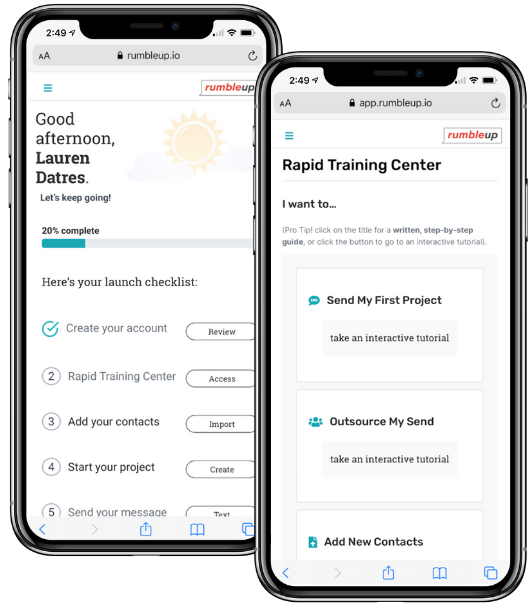
Step 1. Create an account
Our platform is known for speed and ease of use, and we made our onboarding process reflect that. Our turn-key signup means that you can create an account, including loading audience and volunteer data, and start texting in under 15 minutes!
Campaigns of all sizes can confidently speed through the onboarding steps knowing there are different options available depending on the unique needs of the campaign. We provide self-service setup, full-service setup, and hybrid setup options available to anyone.
The Rapid Training Center is a resource available for teams to quickly learn how to efficiently use our platform, including how to send your first text, add new contacts, invite texters, outsource your sending, and more. We provide both step-by-step written instructions and an interactive direct-and-click guide to accommodate different learning styles.
Step 2. Upload your list or request data through the portal
Uploading your list of contacts and volunteers is simple. All you need is an Excel or CSV file of the audience data you wish to use, which should include at least first names, last names, and a viable cell phone number for each contact. Your data can then easily be imported after naming your data and choosing whether to create a new audience segment or add the contacts to an existing segment.
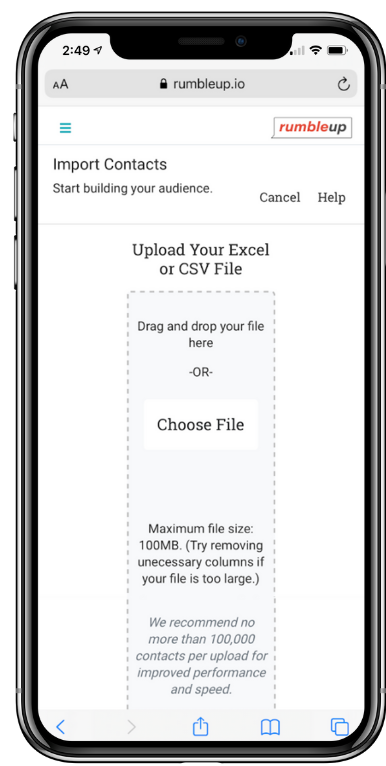
If you do not have any audience data or if you are worried that the data you have may be outdated (filled with landlines, based on old targeting specifications, etc.) you can request data directly through the portal for any demographics you wish to text. We have worked hard to provide our clients with exclusive data integrations to make the entire process as seamless as possible.
The L2 database integration offers comprehensive national records for voters and their contact information with an extensive Voter Data Filter, including hundreds of behavioral attribute fields, demographic fields, and predictive information for excellent audience targeting.
The GOP Voter File integration gives approved republican campaigns access to the continually updated voter information. Audiences can be refreshed regularly to reflect the latest voter tags for up-to-date information on critical data points such as mail-in or absentee ballot status, early voter propensity, and more.
Step 3. Send a personalized message
Sending a text that is personal and written to sound as human as possible is guaranteed to achieve higher engagement rates. A text can be personalized by including the name of the candidate, sending an MMS attachment including an image of the candidate, and including dynamic fields to pull in any custom data fields you included when uploading the audience.
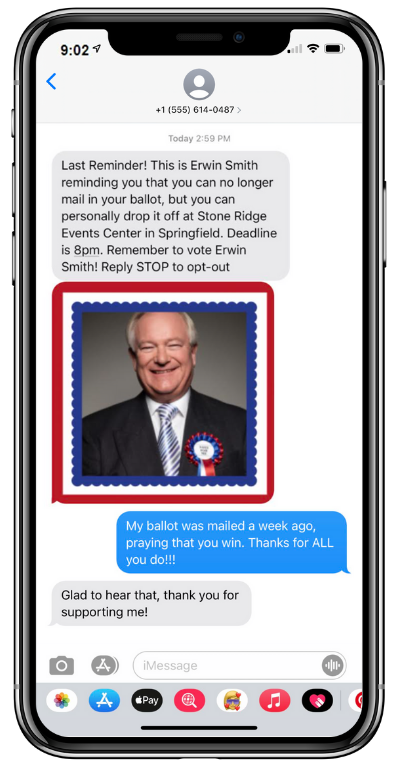
Since our platform allows for 320 character messages, adding a candidate’s name still leaves plenty of room for a full-fleshed out message. Attention to detail can make all the difference when two-way engagement is vital, especially for messages aimed at fundraising or polls.
MMS attachments featuring a picture or video of the candidate along with the inclusion of their name in the message can increase response rates by 50% on average, and our platform offers both Enhanced MMS capabilities and MMS attachments up to 500KB. If the image or video is taken from a major news network/website, it increases the legitimacy of the message to the receiver and encourages engagement with links.
Uploading custom data sets allows volunteers to pull specific information tied to your audience data quickly and easily using dynamic fields in order to get supporters their relevant voting information. Helpful information to include is: the nearest polling location + their COVID safety requirements, the nearest mail-in ballot drop location, voting days and times for counties, ballot initiatives for counties, and more.
Step 4. Tag supporters and talk back and forth with them to make them super-supporters
Our flexible custom tagging feature is available for all clients to utilize and is the best way to keep track of information you gather on voters who respond to your messages. Only focusing on the outbound messages sent without considering responses is a mistake some campaigns make which costs them the power of using conversations to generate fervent support.
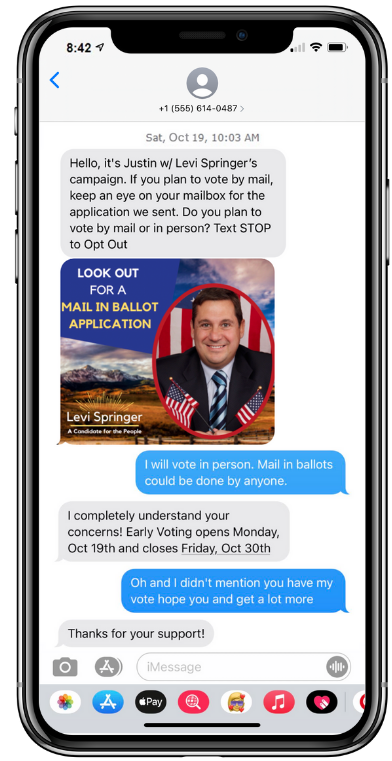
Tagging is easy for campaigns to set up and easy for volunteers to apply to responses. They provide clients with the ability to keep track of responses (to make sure no one is left unresponded to), organize the types of responses received, and aid volunteers with follow up messages.
This screenshot showing a real conversation between our client’s campaign and a supporter is just one example of their successful use of tagging to engage in back and forth conversation. The campaign team tagged this supporter as needing follow up information which they provided using dynamic fields to send the supporter relevant information on early voting. Then, they tagged this supporter as a positive responder and an in-person voter to continue sending more GOTV messages.
Tags also act as filters that can be utilized to create new audiences for future targeted messages such as positive/supporter, donor, in-person voter, etc. They can also be used to make sure that individuals are removed from your contacts, such as people who respond negatively but don’t use an opt-out phrase.
Step 5. Text the RIGHT PEOPLE on election day
If you text people before election day and use the tagging feature to mark people who confirmed their support, then you will know exactly who to text a reminder to get out and vote. As you send GOTV messages, you will learn about your audiences through the responses they send. Make sure you apply tags accordingly!
Many people have already voted by mail or participated in early voting and will tell you if they did so in response to GOTV texts you send them. When someone shares information like this, tag them to indicate that the campaign no longer needs to chase their vote. Continuing to text people who tell you they have already voted is not only a waste of time and money, but can often start to annoy voters.
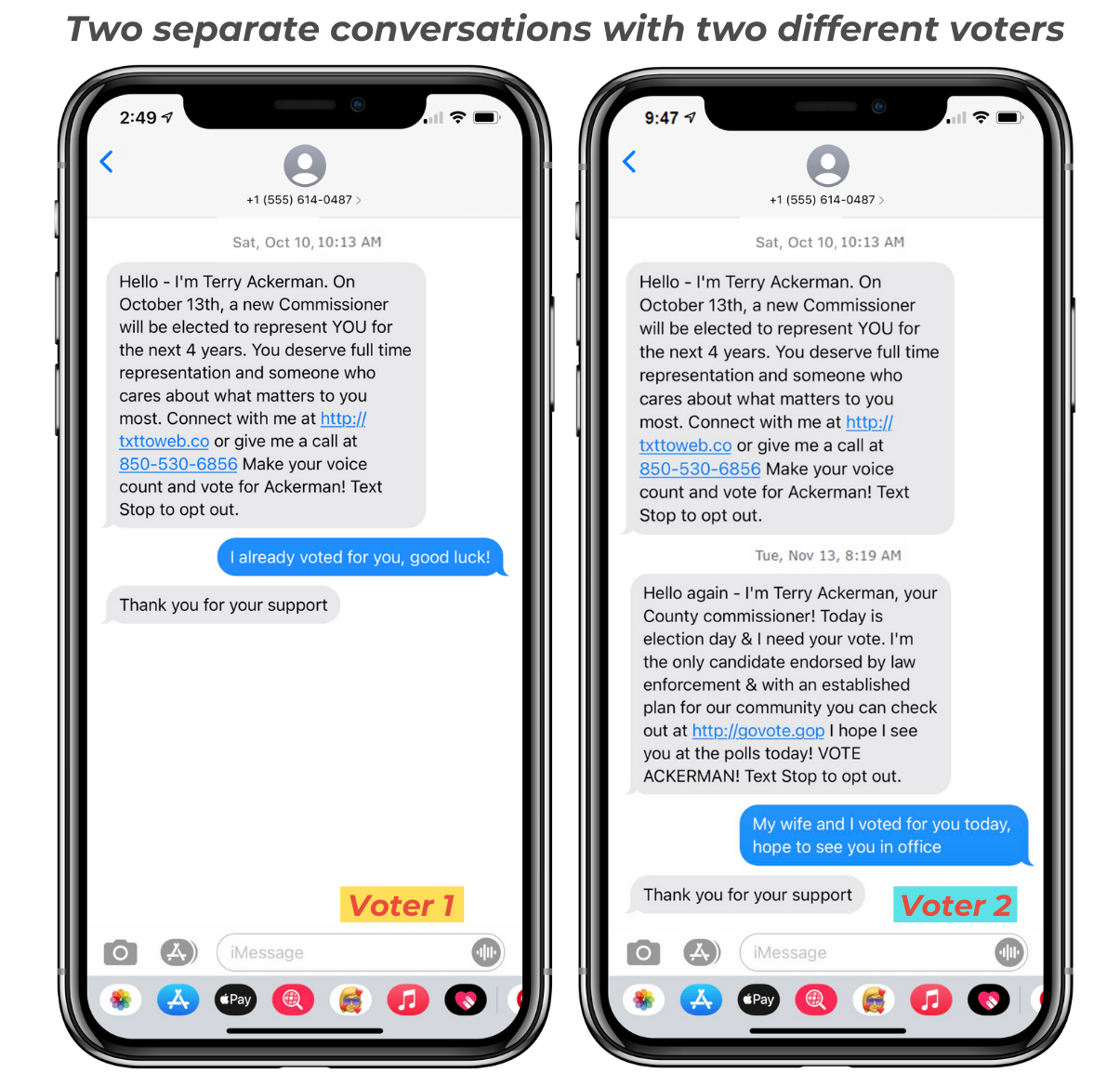
These screenshots showing two real conversations between one of our client’s and two different supporters show how their team used the tagging feature to make sure they stopped texting people who responded they had already voted.
Bottom line:
You need to be getting out the vote with P2P texting and RumbleUp makes it fast and easy to do so. With so many people waiting until election day to go vote, there is no excuse not to get your P2P GOTV campaign started today.
Related News:
-
Dear Voter, Here’s Why Political Texts Are Blowing Up Your Phone - WSJ
- Campaigns turn to texting as coronavirus spreads - Axios
- Playbook : How did you think yesterday went? - POLITICO
- Getting Lots Of Political Messages On Your Phone? Welcome To 'The Texting Election'. - NCPR
Visit us at rumbleup.com to learn more, or contact our team at sales@rumbleup.com to see what our platform can do for your campaign.
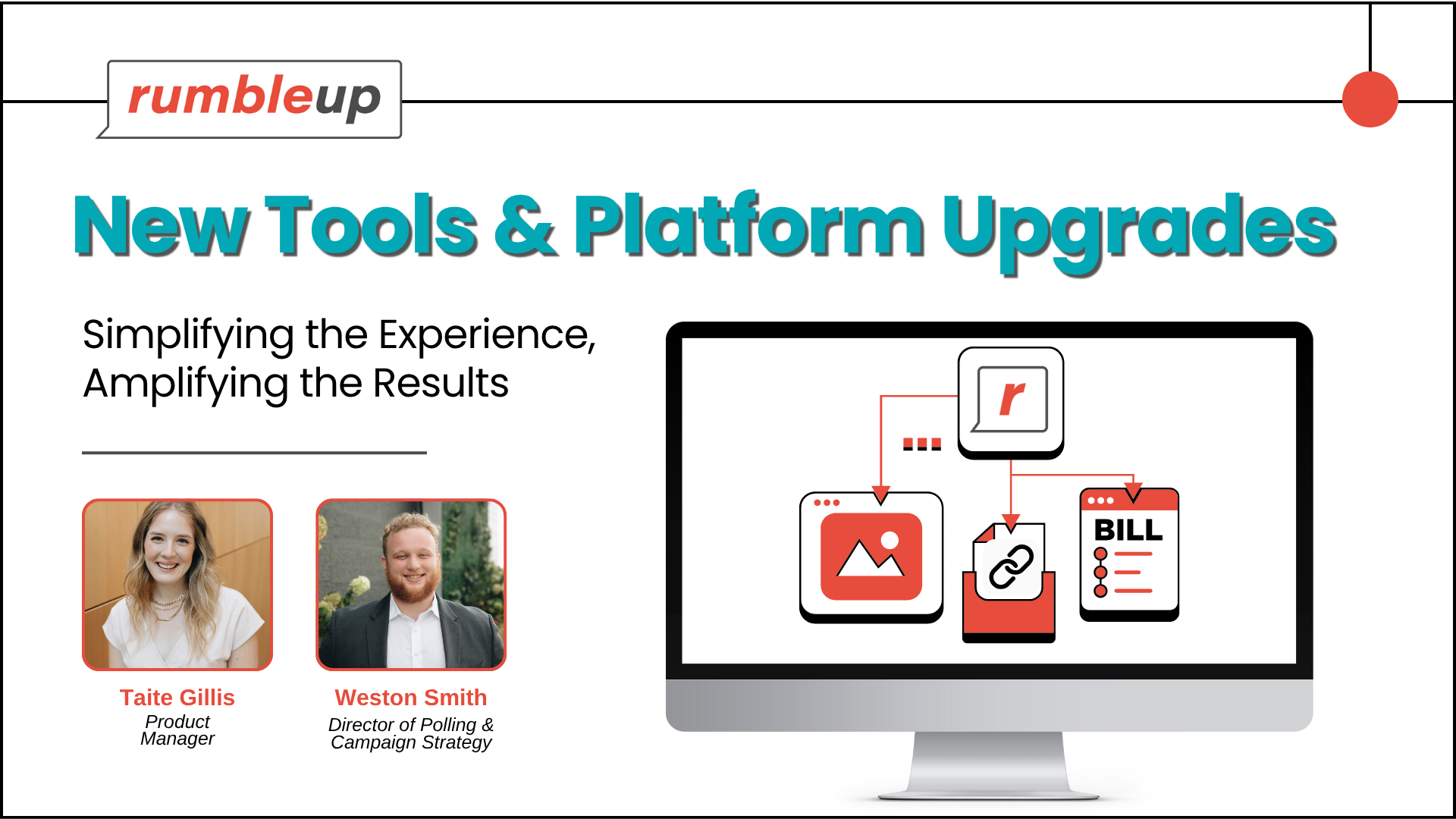
![i360 vs. RumbleUp Which platform is best for your campaign [2025]](https://rumbleup.com/hubfs/i360%20vs.%20RumbleUp%20Which%20platform%20is%20best%20for%20your%20campaign%20%5B2025%5D.png)
![Hustle vs. RumbleUp Which Peer-to-Peer Texting Platform is Right for You [2025]](https://rumbleup.com/hubfs/Hustle%20vs.%20RumbleUp%20Which%20Peer-to-Peer%20Texting%20Platform%20is%20Right%20for%20You%202025.png)